What is Puer Aeternus?
Why is this Jungian archetype so important?
How does the Puer Aeternus arise in the individual?
What are the consequences of this Peter Pan Syndrome? How does this archetype influence society?
In this in-depth guide, we’ll explore these questions and much more.
Let’s dive in …
What is the Puer Aeternus Archetype?
Puer Aeternus is an archetype highlighted in the work of psychiatrist Carl Jung. Puer Aeternus is Latin for the eternal child.
In mythology, the eternal child is expressed as a child-god who doesn’t age. The term originally derives from Ovid’s Metamorphoses (8 CE). In this story, Ovid describes a child god named Iacchus, referring to him as the Puer Aeternus.
As Jung writes in Archetypes of the Collective Unconscious:1“The Psychology of the Child Archetype,” CW 9i, par. 300.
The “eternal child” in man is an indescribable experience, an incongruity, a handicap, and a divine prerogative; an imponderable that determines the ultimate worth or worthlessness of a personality.
Psychologically, this archetype refers to a man who, emotionally speaking, is still an adolescent (hence, “man child”).
Another popular term for this phenomenon is the Peter Pan Syndrome. That is, the Puer Aeternus represents a forever child—a man (or woman) who “won’t grow up.”
Variations and Alternative Names for Puer Aeternus
To varying degrees, Puer Aeternus is also associated with or also known as:
- Peter Pan Syndrome
- Child God
- Man Child
- Inner Child
- Eternal Youth
- Forever Child
- Dionysus
- Don Juan Syndrome
- Eternal Child
- The Addicted Lover
- Oedipal Son
- Mama’s Boy
- The Son Husband
- Failure to Launch Syndrome
We’ll address these various archetypal figures and syndromes throughout this guide.
Puer Aeternus is masculine. It is synonymous with Puer Animus, meaning the masculine child within an adult.
The feminine counterpart is Puella Aeterna or Puer Anima, meaning the feminine child within an adult.
While the Puer Aeternus problem is most often addressed regarding men, this archetype plagues many women as well.
Examples of Puer Aeternus: How This Archetype Expresses Itself
What does the possession of Puer Aeternus look like?
Basically, it looks like the psychology of a 17 or 18-year-old, but in an adult man or woman.
Puer Aeternus Lives a Provisional Life
The Puer Aeternus-possessed man lives what H.G. Baynes called a “provisional life.”2Baynes, Analytical Psychology and the English Mind as quoted in The Problem of the Puer Aeternus by Marie-Louise von Franz. At a deep and perhaps subconscious level, he feels he has not entered “real life” yet.
As such, he’s in an endless holding pattern—hence the term “failure to launch” syndrome.
As Jungian Marie-Louise von Franz explains in The Problem of the Puer Aeternus:3The Problem of the Puer Aeternus, 2.
For the time being one is doing this or that, but whether it is a woman or a job it is not yet what is really wanted, and there is always the fantasy that sometime in the future the real thing will come about. If this attitude is prolonged, it means a constant inner refusal to commit oneself to the moment.
In the mind of the Puer Aeternus, there is always more time. He will do something about it … “someday!” (“Someday,” in the language of the subconscious, means never.)
Peter Pan Wants Only to Experience Pleasure
Those suffering from this archetypal possession are obsessed with pleasure. They perpetually ride the “hedonic treadmill.”
They want to “have fun,” watch TV, play video games, watch porn, get high, enjoy food, and pleasure themselves.
Because the Puer Aeternus is already living in a world of fantasy, porn and other forms of media are ideally suited addictions.
Secretly, they are waiting for “real life” to start, so why not pleasure themselves while they wait?
Puer Aeternus Hates Boundaries
One possessed by Puer Aeternus fears he will be caught in a situation he can not escape.
This fear is a projection from his psychic inner world as he is already in a situation from which he can not escape (i.e. the Mother complex—see below.)
He believes he cherishes his “independence,” but he is the furthest from experiencing true freedom. Instead, he hates boundaries and limitations due to his own lack of internal structure.
He doesn’t want to apply discipline, take responsibility, fully commit to a relationship, or go through the discomforts involved in learning and development. All of these qualities of mature adulthood require setting and maintaining boundaries.
Puer Aeternus Suffers from Grandiosity
In The Drama of the Gifted Child, Alice Miller highlights the two common forms of denial the Puer Aeternus experiences: grandiosity and depression. The grandiose person needs to be admired and can’t live without a feeling of elevation.
This, again, is a common expression of this eternal youth god. As von Franz explains:4Marie-Louise von Franz, The Problem of the Puer Aeternus, 121.
He is merely the archetype of the eternal youth god, and therefore he has all the features of the god: he has a nostalgic longing for death, he thinks of himself as being something special, he is the one sensitive being among all the other tough sheep. He will have a problem with an aggressive, destructive shadow which he will not want to live and generally projects, and so on. There is nothing special whatsoever. The greater the identification with the youthful god, the less individual the person although he himself feels so special.
This emotional sensitivity is another common quality of the Puer Aeternus. One that we can easily observe in a disturbingly large and growing segment of society.
von Franz explains that in some cases, they have a “kind of false individualism, namely that, being something special, one has no need to adapt, for that would be impossible for such a hidden genius.”5Ibid, 2.
Feeling “entitled” is another trademark quality of this Peter Pan Syndrome.
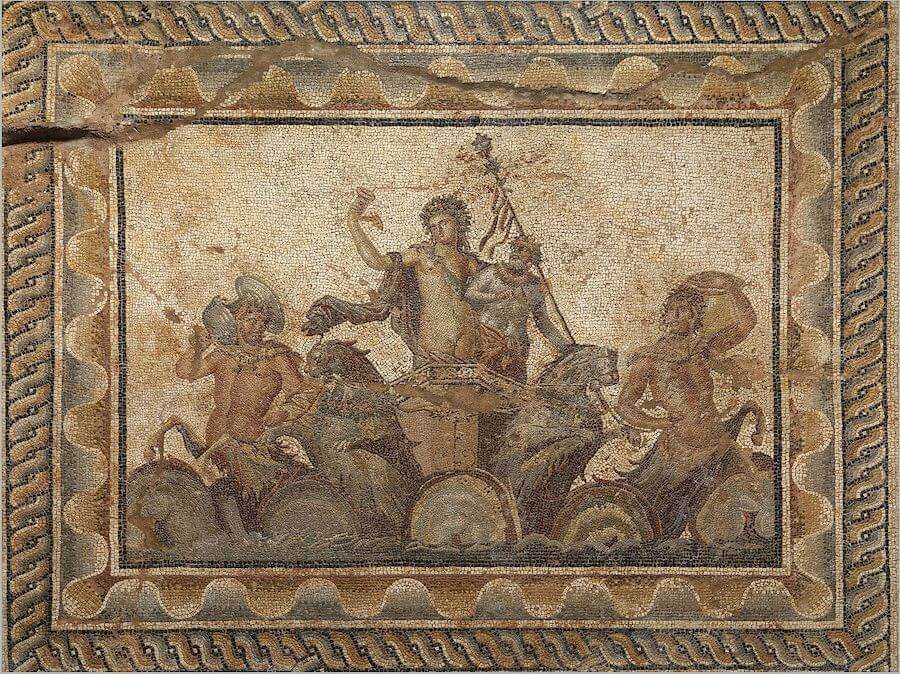
Epiphany of Dionysus mosaic, from the Villa of Dionysus
Dionysus and Apollo: The Tension of Opposites
A fundamental insight from Jung’s work is that the psyche is built on the tension of opposites. Harmonizing these opposites is the function of inner work.
Highlighting two common archetypes—Dionysus and Apollo—can help illustrate the nature of this psychic opposition.
In Greek mythology, both Dionysus and Apollo were sons of Zeus.
Apollo was the sun god as well as the god of medicine, protection, and prophecy. Apollo represents the masculine principle—rationality, order, and structure.
Dionysus, in contrast, was the god of wine, ecstasy, and fertility. Dionysus is more symbolic of the feminine principle—feelings, irrationality, and chaos. Dionysus is also closely associated with hedonism.
In a Jungian sense, Apollo represents the conscious mind while Dionysus represents the unconscious.
In the case of Puer Aeternus/Puella Aeterna, the man/woman is one-sided in favor of Dioynsus while divorced from Apollo.
As such, Peter Pan wants to play, feel good, and “be free,” but at the expense of reason, order, discipline, and internal structure.
Puer Aeternus Symbols in Dreams
Psychologically, the possession of the Puer Aeternus means that the man is bound and gagged.
That is, he is unable to access his healthy masculine energy, the source of his internal power. Being cut off from this source causes a “quiet suffering,” of which the man is most likely unaware.
In his dreams, however, he will often find himself in situations where he cannot escape. Sometimes, he may get devoured by someone or something.
The dream ego may be trapped or behind prison bars. Common dream symbols of this archetype include prison cells, bars, cages, and bondage—representing the “unconscious ties to the unfettered world of early life.”6Sharp, Jung Lexicon, 1991, as quoted in Mats Winther’s “The Puer Aeternus: Underminer of Civilization.”
Again, while the Puer Aeternus wants to be “free” and “independent,” this conscious drive is masked by a deeper psychic truth: he is already bound and caged. As such, his conscious attitude is inauthentic; it’s merely a facade. As von Franz observed, his individualism is fake.
Puer Aeternus and the Mother Complex
The Puer Aeternus archetype is integrally linked with the Mother complex.
With a Mother complex, the adult male still has a high dependence on the mother (psychologically speaking). Psychically, he is still bound to her. When this occurs, the man is often incapable of caring for himself as he lacks the internal structure necessary to be a mature adult male.
Jung highlighted two common results from an unresolved mother complex in adult men: Homosexuality and Don Juanism.7von Franz, The Problem of the Puer Aeternus, 1.
Homosexuality results when the obsession with the Mother is so strong that the man can not even imagine having sex with another woman.
With Don Juanism, the man goes on a never-ending quest to find the “perfect woman” who is a goddess void of any shortcomings.
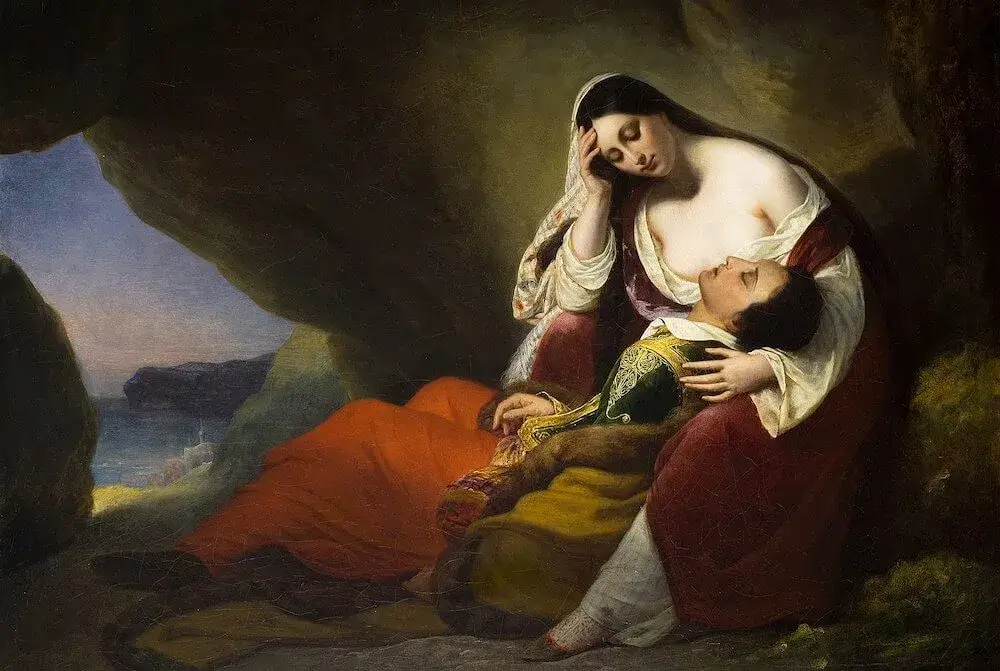
Don Juan asleep on Haidée’s lap by Henry Scheffer
The Mother Complex and Don Juanism
There’s no better illustration of how rampant Puer Aeternus is in modern society than in its obsession with porn.
For example, the website OnlyFans touts over 220 million subscribers and is one of the top 50 visited websites on the Internet.8https://www.statista.com/topics/10083/onlyfans/#topicOverview It only started in 2016 and the company is already a mega-billion-dollar behemoth.
A great deal of porn addiction relates to this Don Juan Syndrome. The Puer Aeternus-possessed man is on an endless quest to find the ultimate woman. A woman, of course, who doesn’t actually exist and who he can never take as a wife. That is, porn, real-life prostitutes, or short-term “flings” represent a safe environment for Don Juan to sample other women without any fear of commitment.
As Jung points out, to a young child, the Mother represents a goddess and the Father represents a god. Through the course of development, the young man or woman must separate from these images to eventually accept one’s parents as flesh and blood mortal men and women.
But in the case of Puer Aeternus/Puella Aeterna, this differentiation never occurs. Instead, the man (or woman) continues to project an archetypal quality onto the mother (or father), which psychologically keeps them at an adolescent stage of development.
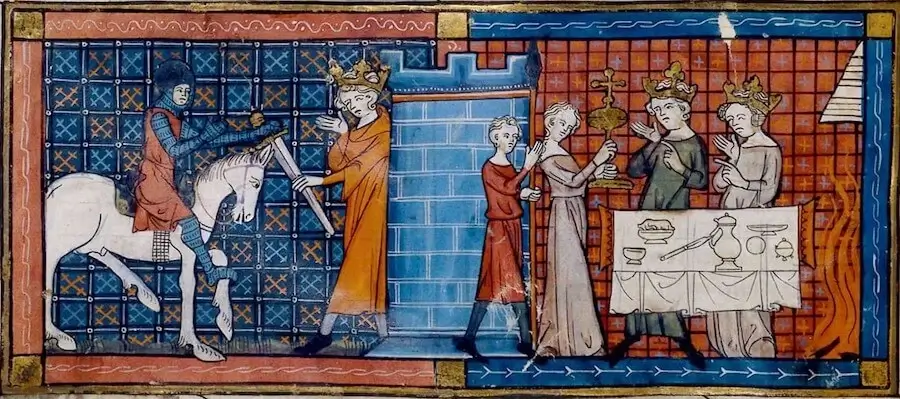
Perceval, the Story of the Grail (1330 Illustration)
Puer Aeternus, Parsifal, and the Mother Complex
In Jungian Robert A. Johnson’s classic He (1989), he uses the Grail legend to illustrate the nature of masculine psychology.
Parsifal’s father and brothers were knights who were all killed in battle. His mother, desperately wanting to keep her only remaining son from this fate, tried to shield him from his heritage and the external world.
But fate cannot be changed; it can only be stalled. Eventually, Parsifal sees a few real-world knights and immediately finds his calling.
His mother, in great distress, agrees to let him leave, but not before wrapping him in a home-spun garment.
This home-spun garment, as Johnson points out, is symbolic of the Mother complex. As long as Parsifal wears this home-spun garment—as he does throughout his many years of knighthood—he is under the spell of the Mother complex and is unable to enter the Grail castle.
Such is the fate of every man who is unable to toss this garment aside and completely leave the psychological safety of the Mother (represented by the womb).
The Devouring Mother and the Son-Husband
Perhaps the oldest mythology we have available to us that describes how the Puer Aeternus came to be is the Babylonian creation myth Enuma Elish.
Jungian author M. Esther Harding gave this myth a dedicated treatment and analysis in The Parental Image: Its Injury and Reconstruction (2003).
In this myth, Tiamat represents the Devouring Mother, an archetype of indescribable power. So powerful was Tiamat and her maternal chaos, that all of the gods combined could not defeat her.
Tiamat creates the eleven constellations of the zodiac (the 12th came later), one of them representing her son, Kingu. She took her son Kingu as her spouse, entrusting him with leading the demons. Tiamat called her son Kingu her “only-spouse.”
As Harding explains:9Harding, The Parental Image, 59.
The primitive mother goddesses always have this kind of promiscuity. They live in accordance with the emotion of the moment—nothing else exists for them.
What hope could Kingu, the son-husband, have when the Maternal Chaos has him in her grips? (That’s why the man possessed by Puer Aeternus lives a “provisional life” while feeling bound and caged.)
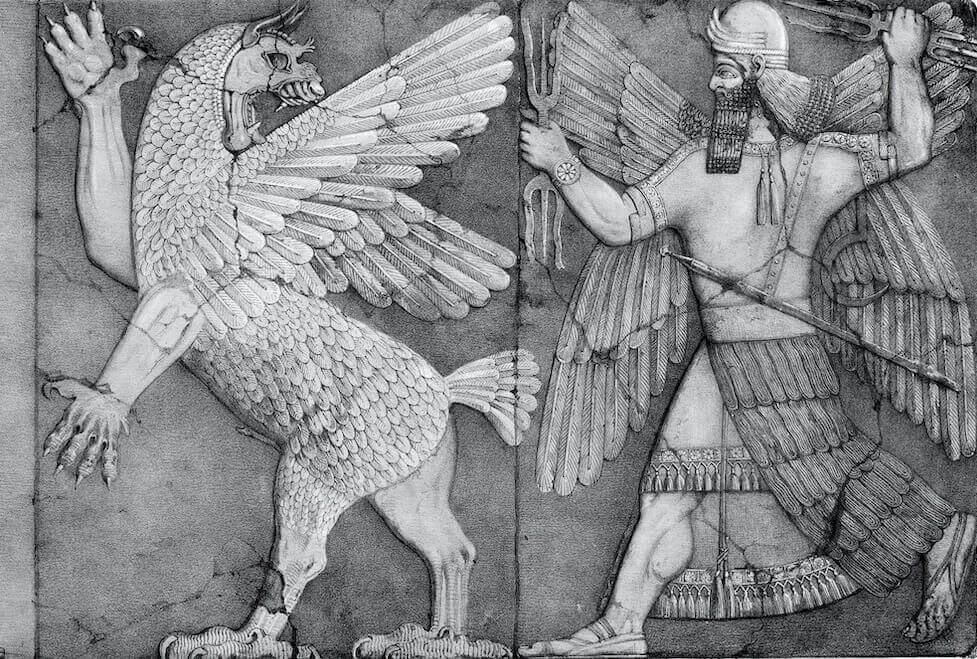
Marduk vs Tiamat
Puer Aeternus and the Oedipus Complex
The myth of Tiamat is representative of a recurrent archetypal, incestuous theme in psychoanalysis, one that Freud termed the Oedipus complex.
In the Athenian story Oedipus Rex by Sophocles (429 BC), Oedipus does not know his true parents at birth and ends up killing his father and marrying his mother. This classic Greek tragedy highlighted a pattern Freud observed in his patients.
At a specific stage of development, the young boy is drawn to the Mother and competes with the Father for the Mother’s affection. Freud believed young boys secretly wanted to possess their mothers and replace their fathers, hence the Oedipus complex. (Freud identified a similar situation in girls called the Electra complex.)
Remember, however, that it’s not the mother that the body is possessed by, but the Mother archetype that represents a goddess in the boy’s psyche (a more Jungian distinction).
When a boy has an absent, passive, or weak father, this Oedipus complex is usually left unresolved. The boy remains “wedded” to the mother, and psychologically speaking, doesn’t grow up.
Instead, he remains a Puer Aeternus, stuck in the Peter Pan syndrome. He will likely suffer from Don Juanism (or potentially homosexuality) as well.
In adulthood, he will likely wrestle with the two bipolar shadow archetypes: the Addicted Lover and the Impotent Lover.
The Addicted Lover and the Impotent Lover
The Addicted Lover and the Impotent Lover are two bipolar shadow components of the Lover archetype.10Robert Moore and Douglas Gillette, King Warrior Magician Lover, 1991.
The Addicted Lover’s primary attribute is a sense of lostness. As neo-Jungian Robert Moore and Douglas Gillette explain:11Ibid, 133.
This lostness shows up in the way that the Addict lives for the pleasure of the moment only and locks us into a web of immobility from which we cannot escape.
Fully possessed by our feelings, we are unable to separate from them and ground ourselves in objective reality. The so-called addictive personality who can’t stop eating, smoking, drinking, having sex, masturbating, or doing drugs is possessed by the Addicted Lover.
What the Addict is seeking (though he doesn’t know it) is the ultimate and continuous “orgasm,” the ultimate and continuous “high.”
The Addicted Lover is the active side of the Lover archetype while the Impotent Lover represents the passive side. When we’re possessed by the Impotent Lover, life is void of any feelings. We experience life as flat and sterile. We lack aliveness, vividness, and alertness.
Here, we see again, the bipolar nature of the Puer Aeternus that toggles us between grandiosity and depression (as Alice Miller highlighted).
How the Peter Pan Syndrome Develops
Most of the Jungian literature on this topic focuses on the boy or girl possessed by this Eternal Child archetype. But ultimately, these archetypal patterns are all triggered by the parent’s psychology—not the child’s.
The child can only respond to his environment based on the psychic forces he observes and absorbs. The responsibility for addressing these imbalances in adulthood, of course, still falls on the individual.
So the point here is not to project blame on the parents, but to shed light on how the Puer Aeternus/Puella Aeterna most often comes into being.
It Often Starts with a Failed Marriage
When a man and woman are in a relatively healthy and balanced relationship—two moderately healthy adults and a good match by various metrics—the Puer Aeternus is not likely to manifest. Unfortunately, this is arguably the exception, not the rule.
The reality is that most people get married when they’re way too young. Most marry out of cultural and social pressures before they’ve developed adult consciousness.
Consequently, they haven’t reached any reasonable level of psychological maturity, which adds emotional fire to the relationship.
The Psychology of the Parents
The Puer Aeternus arises when the father is absent or lacks healthy masculine energy. If the man is grounded and content with his wife (because he has constellated his masculine energy within himself), his wife is more likely to feel secure.
If, for whatever reason, the woman is insecure, neurotic, depressed, and/or fearful, it sets up the conditions for Puer Aeternus to manifest in the child.
How the Mother Establishes the Conditions for the Eternal Child and Son-Husband
In her insecurity, she will unconsciously project “husband” onto her child and psychically wed to him because she secretly believes he’s the only person who won’t hurt her. Only he—her son—will remain faithful and loyal to her just like Tiamat’s son-husband, Kingu.
The confused boy has no choice but to comply. For one, he is still projecting a goddess archetype onto the Mother. Second, he ultimately depends on his mother for his basic human needs. (This creates neurosis that needs to be psychically healed in adulthood.)
The mother will then cling to her son as her source of life, love, and joy. This gives way to the Mama’s Boy archetype—the child psychology version of the Don Juan archetype.
Under these conditions, the mother often praises the son, telling him he’s “special,” which further enforces the grandiosity (ego inflation) of Peter Pan. The son becomes emotionally bound and psychically wedded to his Mother.
The man will wear the home-spun garment of his mother—often with a confused feeling of pride—and become entrenched in a Mother complex in adulthood.
Why Tribal Cultures Used Initiation Rituals
In light of the above, mythologist Joseph Campbell highlighted the instinctive genius in so-called “primitive” initiation rituals of past cultures.
The young boy was stripped from his mother and brought on a series of initial rituals with the men of his tribe. There was often a 5-day fast involved as well as physical pain and ceremonial fighting with masked men (who represented their gods).
When this initiation ritual was complete, the boy was no more. He was now a man, a warrior of his tribe.
Campbell explains that these initiation rituals were intuitively designed to help the members of these societies throw off their infantile egos (Puer Aeternus) and become strong adult men.
The Rise of Puer Aeternus/Puella Aeterna: A Societal Crisis
Puer Aeternus is a highly destructive force in our current civilization. The prevalence of Puer Aeternus can be observed worldwide, but especially in the West.
The rise in Peter Pan syndrome means that a large and growing percentage of the population is psychologically stunted.
Fewer boys are becoming real men who are psychologically integrated with strong masculine energy. Fewer girls are becoming real women, psychologically integrated with balanced feminine energy. (I discuss this crisis in the masculine and the feminine principles in this guide on the Anima/Animus archetype.)
The result is a regression into Neverland built on a world of fantasy.
As Neverland Grows Stronger…
Left unchecked, widespread Puer Aeternus leads to hedonism as society descends into ever-increasing levels of degeneracy. The moral fibers of civilization weaken and deteriorate.
At present, this societal “psychic infection” is growing. This phenomenon represents a cycle.
The same thing happened in the Weimar Republic (German Reich) in the 1920s and 1930s and in Russia in the 1800s.
Berlin became a liberal hotbed in the 20s. Homosexuality, transsexuality, male prostitution, sex parties, and sex parades became commonplace. The first “gender surgery” took place there too.12Daily Mail article on Gay Berlin Hedonism was celebrated as the Dionysian archetype possessed the region. At its peak, bestiality was witnessed and celebrated in the streets as well.
It was under these conditions that Hitler rose to power. Those not possessed by Puer Aeternus welcomed a strong, authoritarian leader. The tension of opposites within the collective (and the individual) psyche tries to balance itself.
Will history repeat itself?
The Real Risk of Puer Aeternus on Civilization
What happens when the Eternal Child possesses a larger percentage of a civilization?
A large group of children still need a parent or guardian. (Remember, the Puer Aeternus’s drive for “independence” is a mask for their complete lack of autonomy.)
As a consequence, totalitarianism and fascism inevitably rise to fill the void where mature adulthood is supposed to be.
Whenever you see a group of people who aren’t strong and psychologically developed, an entrenching “government” (control system) is always growing in the background.
Although those possessed by Puer Aeternus desire “freedom,” they are already bound and weak. As such, they look to the State to “care” for them and tell them what to believe. (Hence, an ideological society develops. One that’s ungrounded and divorced from objective reality.)
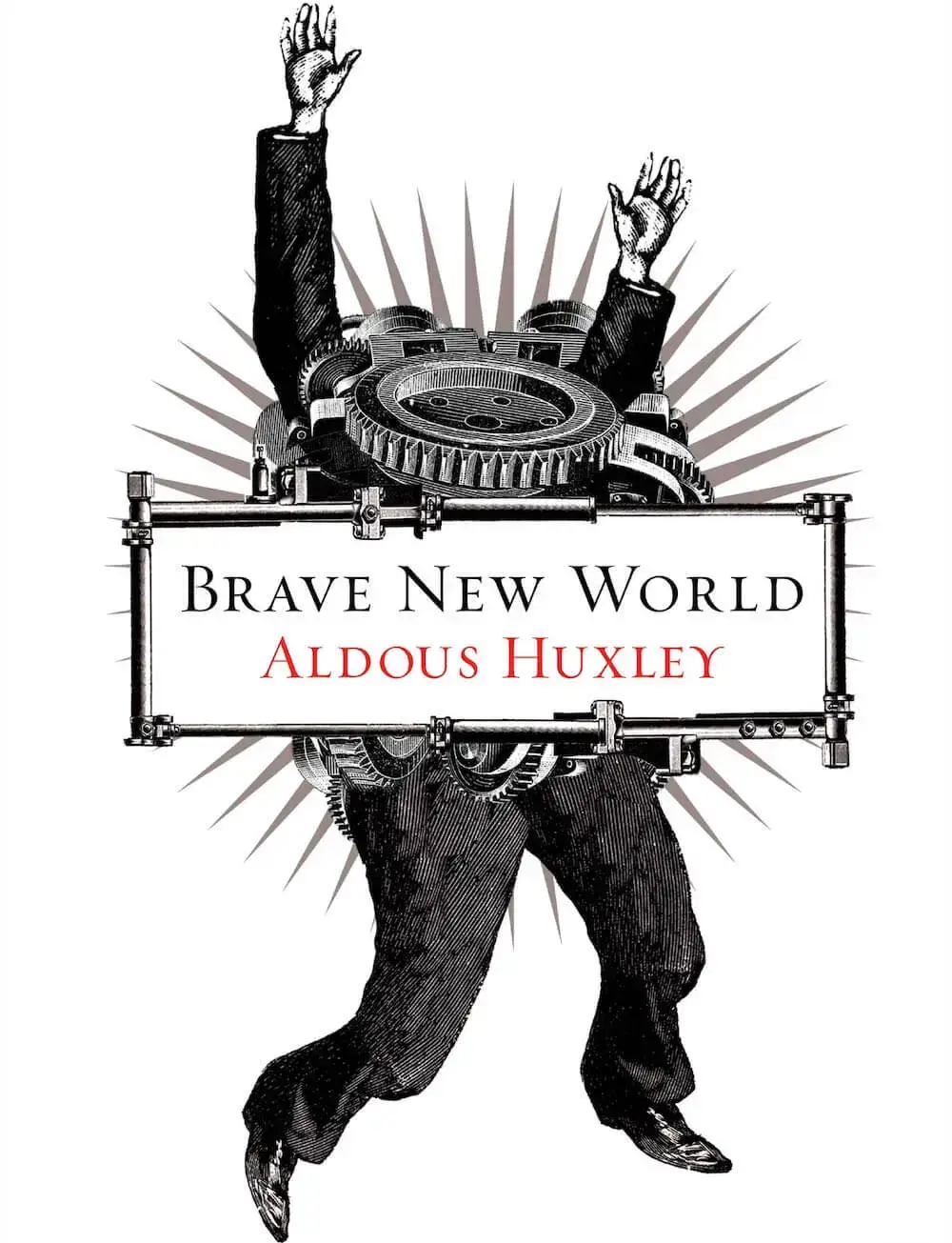
Puer Aeternus Leads to a Not-So-Brave New World
The hedonic drive of Peter Pan makes him an easy target. He has submitted to his impulses and drive for pleasure at the expense of autonomy, discipline, will, development, and effort.
Aldous Huxley’s dystopian novel, A Brave New World (1932), wasn’t a work of fiction; it was a blueprint. With drugs (“soma”), wireless connections, virtual headsets, video games, and so on, you have all the tools and conditions needed to sedate the adolescent mind of the Puer Aeternus.
This allows a totalitarian regime to assume control over the masses. Eventually, if left unchecked, this regime will become increasingly forceful and belligerent as in the dystopian future of Orwell’s 1984. Pleasure first; pain second.
These threats are real, as hopefully most of you reading this already know.
The True Cause of the Rise of Puer Aeternus
While Puer Aeternus is a universal archetype, its rise and extreme imbalance in “modern civilization” is not natural or accidental.
I can’t go into detail here, but all modern-day movements related to Puer Aeternus (of which today are politically “left” leaning) are socially engineered. For example, if you research how movements like L-G-B-T++++, B-L-M, and A-N-T-I-F-A arose and who funds them, a clear pattern presents itself.
A common theme of movements possessed by Puer Aeternus is they always scream about being oppressed while simultaneously trying to suppress the rights of others. This level of hypocrisy is a classic expression of this archetype.
So-called “woke-ism” is an expression of intentional psychological warfare. As I highlighted in this guide (Addendum 1), these artificial movements are funded by various oligarchs with maligned agendas.
These movements, which were seen in Germany in the 1920s, in Russia in the 1800s, and throughout the West today, were all engineered by the same group of people. (For those who have done their research, “All roads lead to Lon-done” (i.e. Brit-ish intelli-gence & aristocracy).13See this article by journalist Richard Poe.
Even an ideological movement like Marxism, which also fuels Puer Aeternus, was engineered by the same group of people.14Tom Luongo Podcast Episode #171 – Richard Poe.
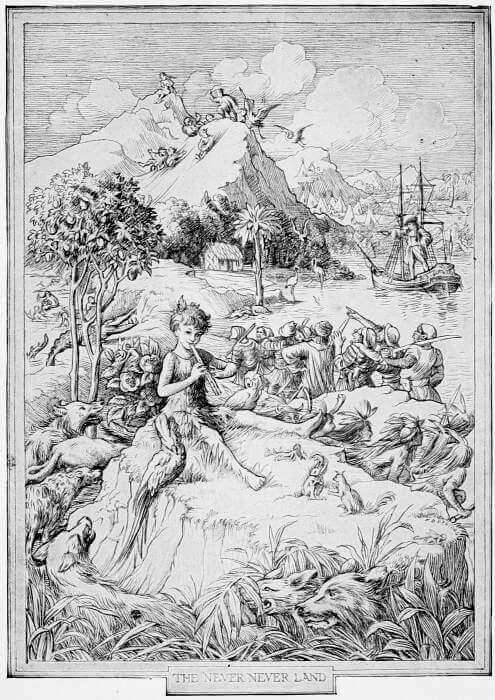
Illustration from “Peter and Wendy” by James Matthew Barrie (1911)
Leaving Neverland: How to Break Free of the Peter Pan Syndrome
Freeing oneself from the Peter Pan Syndrome and shedding the Puer Aeternus is no easy feat.
It requires the man or woman to constellate their internal energy within themselves instead of leaking it out on fleeting desires, pleasures, excessive emotionality, fantasies, and other distractions (everything the Puer Aeternus/Puella Aeterna loves).
Leaving the Ordinary World
As I highlighted in this guide to Joseph Campbell’s Hero’s Journey Steps, the significance of the hero’s journey is that it represents the stages of psychological development.
The Hero’s Journey is both metaphorical and physical. While it represents a psychological process, this journey does have many real-world correlates.
At the beginning of the journey, the young hero leaves the ordinary world which represents the “known” (safety), and enters the special world representing the “unknown” (lack of safety).
Psychologically, this means leaving the safety of the Mother and Father as well as any other dependence on authority outside of oneself.
For those ensnared by a Devouring Mother, often a physical (and potentially emotionally violent) separation from the mother is necessary. This separation need not be permanent, but long enough for the man to shed himself to remove his home-spun garment and come into his own.
Accepting the “Call to Adventure”
While the Hero archetype is often celebrated in society, this archetype still represents child psychology. That is the hero at the beginning of the adventure, if successful, matures into adulthood by the end. He sheds the Hero energy in favor of healthy, integrated masculinity.
It’s through trials, tribulations, defeats, and setbacks along the journey that the individual learns their limitations and boundaries. If we refuse the “call to adventure” in the Hero’s Journey, we can never learn our limitations and accept these boundaries.
As stated above, the Puer Aeternus hates boundaries and limitations. As such, a man or woman possessed by this archetype will always refuse the call to adventure. They will stay in the “ordinary world” that’s safe and known to them and live within their fantasies instead.
Addressing one’s fears, both real and imagined, is an essential step toward adulthood.15David Richo, How to be an Adult, 1991.
Healing the “Inner Child”
I never use the popular term “inner child” (from Freud, I believe) because although it’s the right concept, it’s still inaccurate.
“Inner child” assumes a singular part when, in fact, there are many inner children. (Working from Robert Moore’s model, for example, there are at least eight.) The psyche is a plurality, a collection of many archetypes; it’s never just one.
Regardless, these wounded inner children’s accumulated pain, rage, and fears give rise to the Eternal Child and its manifestations in adulthood.
As such, it’s up to the individual to self-parent these various parts to the best of one’s abilities. Active imagination can be a valuable tool for this process.
However, not all of these wounds can be “healed.” Instead, the wounds are simply brought to consciousness so the repressed emotions can be unblocked. Then, the adult can grieve these losses and come to acceptance.
Becoming a Self-Contained, Autonomous Adult
The theme for those wrestling with the Eternal Child is a lack of internal structure. The child’s mind gets rooted like a tick, keeping the individual from accessing adult consciousness.
External rituals like marriage and monogamy—something the Puer Aeternus resists—are designed to help the individual establish this structure. (This doesn’t mean that marriage is essential for adulthood or that it guarantees one will transcend the Eternal Child because of it.)
Developing qualities like discipline, impulse control, accountability, honesty, and responsibility are essential to becoming self-contained.
Those struggling with addictions, especially men wrestling with porn addiction, must bring these impulses into balance. Porn and sex addiction leaks one’s internal energy (chi). Without constellating this energy within, I would argue that there’s no way of overcoming the Puer Aeternus archetype. (See this guide on transmuting sexual energy.)
Gender confusion of any kind, including the feminization of men and the masculinization of women, fosters and reinforces significant imbalances within the psyche. Men must root themselves in healthy masculinity while women must root themselves in healthy femininity. Then, much of the tension related to Puer Aeternus can begin resolving itself.
Healing one’s ego inflation (grandiosity) and addressing many of these childhood wounds requires in-depth shadow work.
Finally, the cultivation of virtues supports the psychological maturation process as well.
Puer Aeternus Reading List
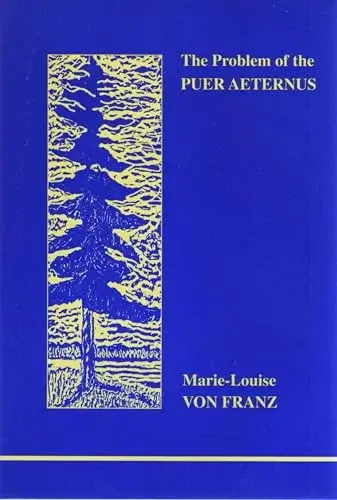
The Problem with Puer Aeternus
by Marie-Louis Von Franz
Paperback
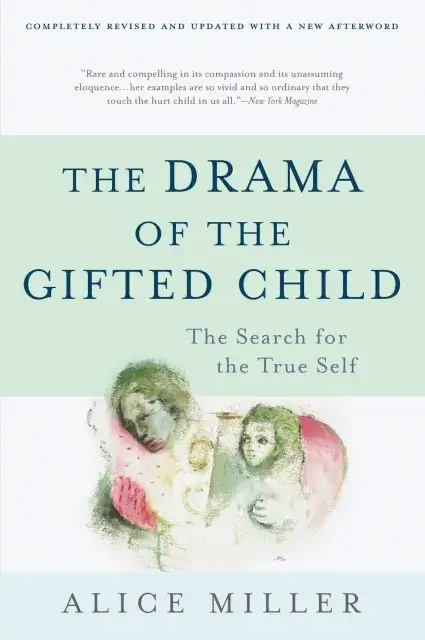
The Drama of the Gifted Child
by Alice Miller
Paperback
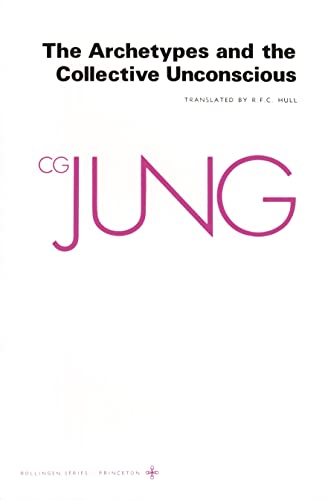
Archetypes and the Collective Unconscious
by Carl Jung
Paperback
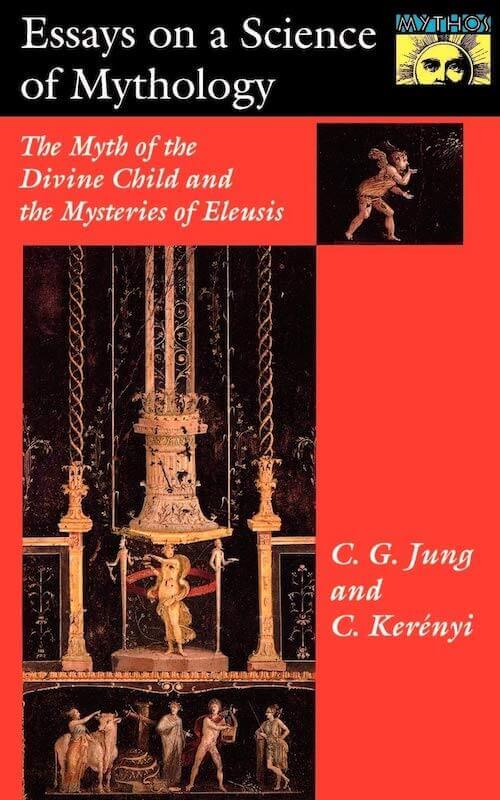
Essays on a Science of Mythology: The Myth of the Divine Child and the Eleusian Mysteries
by C.G. Jung and Carl Kerenyi
Paperback
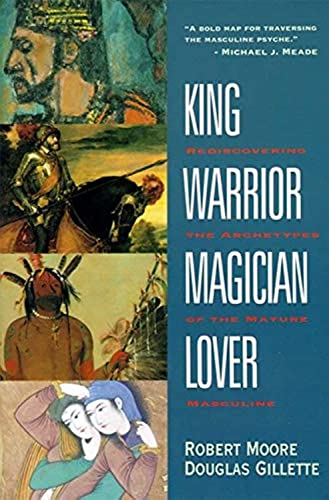
King Warrior Magician Lover
by Robert Moore & Douglas Gillette
Paperback
Read Next
How to Work with Archetypes (2-Part Series)
